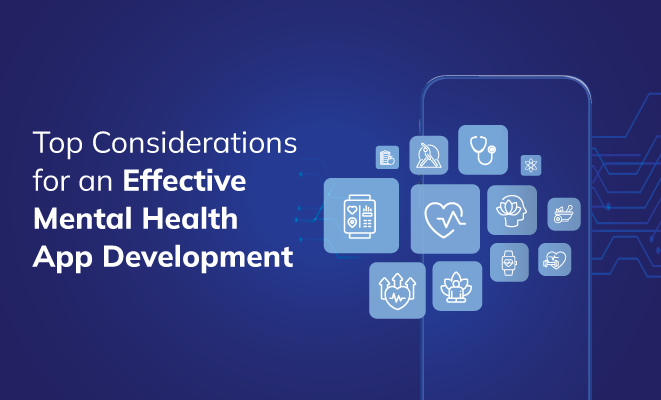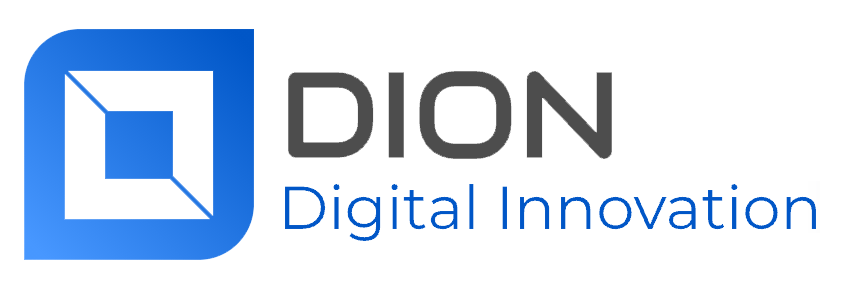Top Considerations for an Effective Mental Health App Development
In recent years, the rise in awareness surrounding mental health has led to the development of various digital interventions, including mental health applications. These applications offer a multitude of benefits for individuals seeking resources, support, and treatment options related to their mental health. The popularity of apps as a means of accessing mental health care has risen exponentially, with the number of apps available on the market continually increasing.
However, due to the sheer volume of options and lack of stringent regulations, not all mental health apps are created equal. Designing and developing a mental health app with the potential to make a significant impact on an individual’s mental well-being requires a deep understanding of the nuances involved in creating a safe, effective, and user-friendly platform. In this Article, we will delve into the key aspects of designing an effective mental health app while exploring the key considerations to be taken care of in the process.
Part 1: Identifying User Needs — Research & Planning
Defining Your Target Audience
Having a clear understanding of the target audience can be a great way to determine the features and functionalities that a prospective user base might be seeking in a mental health app. These features and functionalities should be aligned with the user’s requirements and expectations, thereby creating a positive user experience and ensuring the success of the app.
Conducting Market Research
Perform comprehensive market research to gain insights into current mental health trends, unmet user needs, and existing solutions within the app stores. Analyze the strengths and weaknesses of relevant apps, identify the gaps in the market, and use these insights to create an app that offers unique features and stands out from the competition.
Collaborating With Professionals & Experts
Seek input and feedback from mental health professionals and experts throughout the development process. They can provide valuable insights into disorder-specific symptoms, treatments, and coping strategies that should be incorporated into your app. Additionally, their professional endorsement can increase credibility and trust among users.
Involving Users in the Design Process
Involve actual users in the design process to ensure that the app meets their needs and expectations. This can be achieved through user interviews, focus groups, or beta testing. Gathering user feedback during the development phase will allow you to make necessary adjustments, thereby increasing the chances of success upon launch.
Part 2: Design & Development – Ensuring Adoption and Retention
Creating an Intuitive & Engaging User Interface
Design a user interface that is visually appealing and easy to navigate. Users are more likely to engage with and continue using an app that provides a seamless experience. The app should be accessible to users of various ages, education levels, and mental health concerns, ensuring that the interface and language used are both clear and concise.
Personalizing the User Experience
Integrate personalization features in your app to tailor the experience to fit each user’s individual needs. This can include customizing the app based on user preferences, interests, and goals, as well as providing personalized feedback, suggestions, and resources. A personalized app is more likely to keep users engaged and motivated to continue using it over time.
Incorporating Evidence-Based Techniques & Intervention Methods
Ensure that the mental health techniques and intervention methods included in the app are based on scientific research and proven to be effective in treating mental health disorders. This not only increases the likelihood of the app being successful in helping users but also contributes to its credibility and trustworthiness.
Tracking Progress & Providing Feedback
Include features within the app that allow users to track their progress and receive feedback on their mental health journey. Having these features on the app can help users stay engaged with it and continuously take steps to improve their mental well-being as they use it. This feature can also provide users with a sense of accomplishment, as they can see the progress they are making with the app.
Encouraging Social Support & Community Building
Incorporate social support features in your app as they can play a crucial role in mental health recovery. This can include peer support groups, forums, or even gamification features that encourage users to share their progress and connect with others.
Cross-platform Compatibility
Ensure that your app is compatible with multiple platforms, such as iOS, Android, and the web, to reach a wider user base and provide a seamless experience across different devices. Additionally, make sure to optimize the app for different screen sizes and resolutions. Test it across different devices to ensure a smooth user experience.
Part 3: Scientific Validation & Compliance
Testing the Clinical Validity of the App
The clinical validity of an app is arguably the most critical component of its scientific validation since it measures how accurately it helps users with their mental health. To ensure the reliability of the data provided, mental health apps must go through meticulous testing and validation procedures such as peer review and user testing to ensure accuracy.
Maintaining the Accuracy of the App Data
Accuracy is essential for ensuring that mental health apps provide reliable and valid data. This can be achieved through rigorous testing and validation processes such as peer review and user testing. To ensure the best outcomes, accuracy must be prioritized throughout all development phases, from initial design to final implementation.
Promising Privacy and Security
Protecting user data is a key concern for mental health apps. Apps should be designed with robust security measures such as user authentication and encryption to ensure that user data remains secure. Furthermore, user data should be stored on secure servers that are regularly backed up and monitored for any potential security breaches.
Adhering to Ethical Standards
Mental health apps should adhere to ethical standards such as informed consent, data privacy and security, and data storage. In order to uphold these ethical standards, mental health apps must be designed, maintained, and managed with the utmost care and diligence. Apps should be regularly assessed to ensure they function properly and meet ethical standards.
Ensuring HIPAA Compliance & Data Privacy
Apps containing sensitive information and personal data are required to adhere to the Health Insurance Portability and Accountability Act (HIPAA). Hence, mental health app development companies need to employ specific security measures like encryption, data anonymization, and access control. Also, the use and storage of data should be clearly outlined in a privacy policy.
Our Approach to Mental Health App Development at Digital Innovation
In recent years, there’s been a surge of mental health apps landing on the app stores; however, many of them fall short of delivering practical and effective solutions. To ensure that a mental health app provides genuine value to users, developers need to carefully design the app, taking various factors into consideration. In this article, we will explore several key elements involved in creating an effective mental health app, from identifying user needs to scientific validation and building trust through privacy and security measures.
Familiarize with the Users and Understand their Needs
The first step in developing a mental health app is to understand the target audience. This includes identifying the specific mental health issues the app aims to address, as well as the demographic characteristics of the intended users. By understanding the target audience, developers can create an app that is tailored to the unique needs and preferences of its users.
In order to identify mental health app users and their needs, we consider the following:
- Purpose: What mental health issues does the app aim to address? (e.g., anxiety, depression, stress management, etc.)
- Age group: What age group is the app intended for? (e.g., children, adolescents, adults, older adults)
- Demography: Are there any specific demographic characteristics of the intended users? (e.g., gender, cultural background, socioeconomic status)
- User preferences: What are the unique needs and preferences of the target audience? (e.g., language preferences, accessibility requirements, preferred communication styles)
- Client’s requirements: What features and functions do stakeholders want within the mental health app? (e.g., tracking & monitoring tools, assessment tools, messaging, and others
Incorporate Evidence-Based Practices
To ensure the effectiveness of a mental health app, it is crucial to incorporate evidence-based practices into its design and functionality. This means that the app should be grounded in scientific research and proven therapeutic techniques. By incorporating evidence-based practices, developers can create an app that is not only engaging but also effective in improving users’ mental health.
Some evidence-based practices we consider for incorporating features and functionalities into a mental health app include:
- Cognitive-behavioral therapy (CBT): CBT is a widely researched and proven therapeutic approach that helps individuals identify and change negative thought patterns and behaviors.
- Mindfulness-based interventions: Mindfulness practices, such as meditation and deep breathing exercises, have been shown to be effective in reducing stress and improving mental well-being.
- Psychoeducation: Providing users with information about their mental health issues and coping strategies can empower them to take control of their mental health journey.
- Social support: Incorporating features that facilitate social support, such as peer-to-peer messaging or support groups, can help users feel less isolated and more connected to others who share their experiences.
- Remote assistance: By integrating the remote assistance feature into mental health apps, we help bridge the gap between patients and practitioners.
Ensure Privacy and Security
Privacy and security are paramount when developing a mental health app. Users must feel confident that their personal information and mental health data are protected and secure. This requires the use of strong encryption protocols and secure authentication systems. It is also important to have a clear privacy policy that outlines how the data is used and stored.
Our strategies for ensuring privacy and security in a mental health app include:
- Encryption: Implement strong encryption for data storage and transmission
- Authentication: Require user authentication, such as a password or biometric data, to access the app
- Privacy: Provide clear and transparent privacy policies that outline how user data is collected, stored, and used
- Updating: Regularly updating and patching the app to address potential security vulnerabilities
Develop a UI/UX Interface that Appeals to Users
An engaging user experience is essential for the success of a mental health app. Users are more likely to continue using an app and benefit from its features if they find it enjoyable, easy to use, and visually appealing. To create an engaging user experience, developers should focus on the following aspects:
- User interface (UI) design: The UI should be visually appealing, intuitive, and easy to navigate. This includes using appropriate colors, fonts, and graphics, as well as ensuring that buttons and menus are clearly labeled and accessible.
- User onboarding: The onboarding process should be smooth and informative, guiding users through the app’s features and functionality. This can include providing tutorials, tooltips, or in-app prompts to help users get started.
- Personalization: Allowing users to customize their app experience, such as setting personal goals or choosing preferred notification settings, can increase engagement and user satisfaction.
- Gamification: Incorporating game-like elements, such as rewards, challenges, or progress tracking, can make the app more enjoyable and motivate users to continue using it.
Quality Assurance and Testing
Quality assurance (QA) and testing are essential components of software development. QA is the process of ensuring that the product meets the quality standards set by the company and is free of errors or defects. A well-outlined QA and testing process ensures that the app meets the requirements and expectations of stakeholders, i.e., mental health professionals and end users.
- Functional testing: Every feature and functionality of mental health apps is rigorously tested before being released. We use a range of testing methods to identify issues, bugs, and errors that may negatively affect the user experience.
- Usability testing: We test our apps extensively to ensure they are easy to use, navigate, and meet the needs of the target audience. We use surveys, focus groups, and interviews to ensure the mental health app is right up to users’ expectations.
- Performance testing: Our load testing ensures the app performs optimally under heavy loads and is scalable. The app is also tested for response time, stability, and speed according to our high standards.
- Security testing: We conduct thorough security testing to protect all sensitive information of app users. Encryption and authentication features are tested to ensure data security.
- Compatibility testing: Apps we develop for mental health are tested across devices, operating systems, and screen sizes. Apps are extensively tested to ensure they work on all devices and platforms without lag.
- Regulatory compliance testing: We ensure compliance with regulations and standards, such as HIPAA and GDPR. Regulatory compliance testing lets us make sure data is protected and privacy laws are followed.
Conclusion
We tried to essay every aspect of designing a mental health app in the article. Through our exploration, we discovered that there is a great deal of complexity involved in designing an effective mental health application. An approach to user experience that caters to a variety of psychological, technical, and user experience skills is required. As such, it is important to invest in the services of a qualified professional to ensure the app is produced to the highest standards.
At Digital Innovation, we pride ourselves on being an app development company that has a long history of developing mental health apps. We specialize in creating innovative and user-friendly mental health apps that are specifically tailored to meet each of our clients’ unique needs. Our team of experienced developers and designers are knowledgeable in the latest technologies, ensuring that our apps are reliable, secure, and easy-to-use. We are committed to providing top-notch solutions to our clients, so they can better support their users’ mental health.
Author


